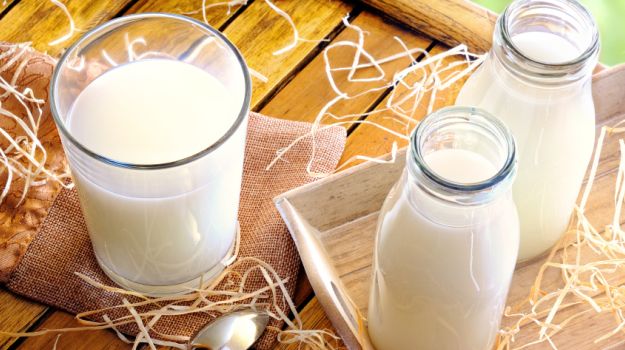“Doodh Doodh Doodh …. wonderful doodh.” Who can forget this rhyming jingles of 1999 played on the national television that defined milk as an elixir. Milk is an important source of nutrients including high-quality proteins, carbohydrates, and selected micronutrients. This nature’s perfect food comprises of 87% water and 13% total solids and.
What is A1 and A2 Milk?
Caseins are the predominant milk proteins and it constitutes 95 % of the milk proteins. Among the caseins, beta casein is the second most abundant protein and has an excellent nutritional balance of amino acids. Mutation, a process by which there is a change in the structure of a gene, resulting in a new variant. Such a mutation in beta casein gives rise to 12 variants among which A1 and A2 are the most common.
Both A1 and A2 are varieties of milk and are the product of two genetically different cow breeds. Earlier all cows used to be A2 until a naturally occurring genetic mutation in European breeds changed the genetics of milk producing cow herds. A1 is predominant in exotic cattle and A2 is predominant in Indian and African cattle.
The difference between A1 & A2?
The mutation causes a change in a single amino acid in the a-a chain, the amino acid at number 67 is histidine in A1 and proline in A2 milk. This polymorphism leads to a key conformational change in the secondary structure of expressed β-casein protein.
Digestion of A1 milk yields a compound called beta-casomorphin-7 (BCM7). No such compound in the digestion of A2 milk.
In hydrolysed milk with variant A1 of beta-casein, the BCM-7 level is 4-fold higher than in A2 milk.
New Zealand researchers claimed that A1 milk contains beta-casein which is harmful to human beings. The results of the NDRI research also indicated that A1 milk that is served to infants and old age people damages the immune system.
Benefits of A2 milk over A1 milk
By drinking A2 milk, one is no longer exposed to BCM-7 found in A1 milk which has been linked to-
Neurological Impairment
Type 1 Diabetes
Impaired Immune Response
AutoImmune Disease
Heart Disease
Milk we consume in India
By contrast, India has A2 cows which are mainly the native desi breeds. India has 37 pure cattle breeds like Sahiwal, Gir, Red Sindhi, Tharpakar, Rathi, Kankrej, Ongole, and Harianato etc. The milk delivered by all the desi cows was of the A2 variety. However, breeds which developed after the Government program, White Flood, launched during 1970 to gain dairy prowess. India went on to hybrid its native desi cows with the European species of Jerseys and Holstein Friesian which delivered A1 milk.
The practice of developing a new breed indiscriminately with every passing decade triggered a two-pronged crisis. First, the new breeds destructed the indigenous cow and consequently, the new exotic breeds did not adapt themselves to the Indian conditions. And the result, according to animal experts, was that within 10 years all the Indian desi breeds of cow disappeared.
Brij Kishore Yadav, the former Technical Officer at the NDRI, Karnal, who inseminated more than One lakh cows during his tenure, says that,
“India, today is standing at the precipice of a disaster. It seems the Government earlier ignored the importance of desi cows. The Government actually lacked foresight.If crossbreeding had been done of less milk yielding Indian cows with the breeds of the European countries yielding more milk had been done it would have helped us. But what we did here was completely unplanned. We inseminated all the high yielding cows as well as less milk yielding ones in a similar way.Today India despite the fact that it is the world’s largest milk producer is facing the threat of losing its dairy prowess.”


Nice post, Drink A2 milk is very beneficial for kids so it is very important to use only best quality milk. Cowzy Milk is one of the best-quality dairy product manufacturer in India.
ReplyDeleteNice information. For more information
ReplyDeleteVisit:- https://paavidesicowmilk.com/